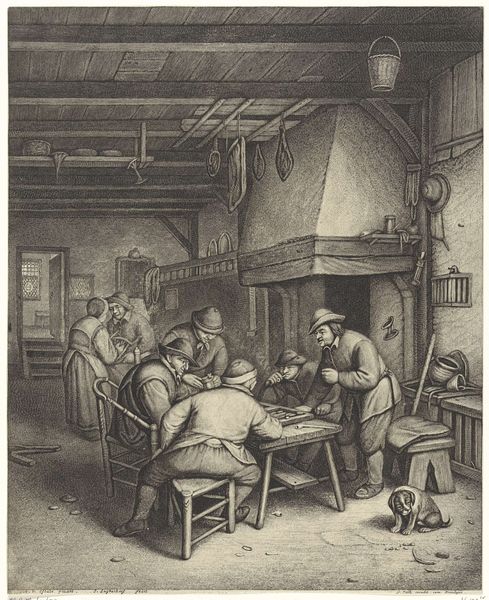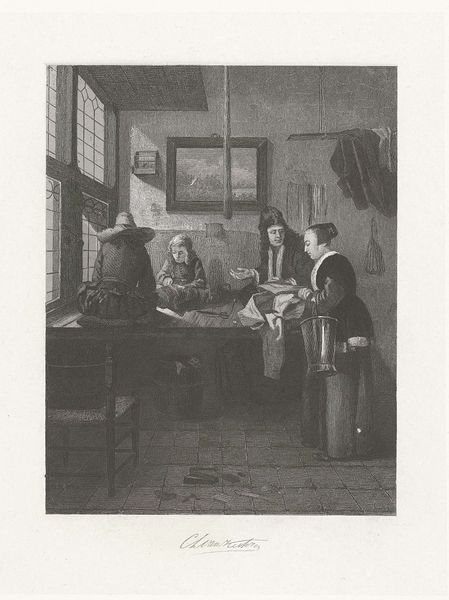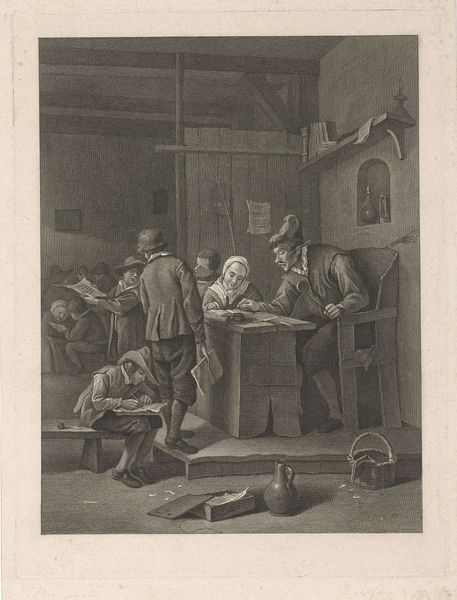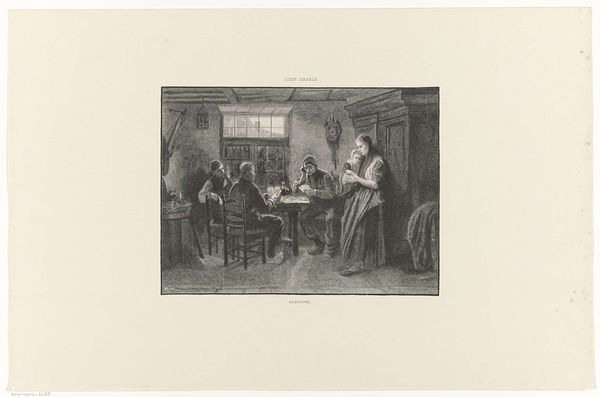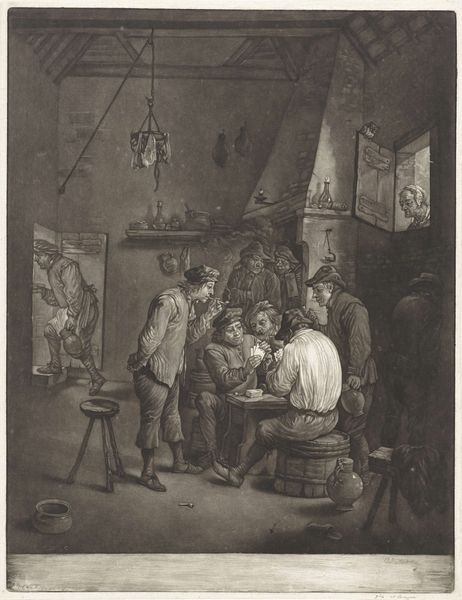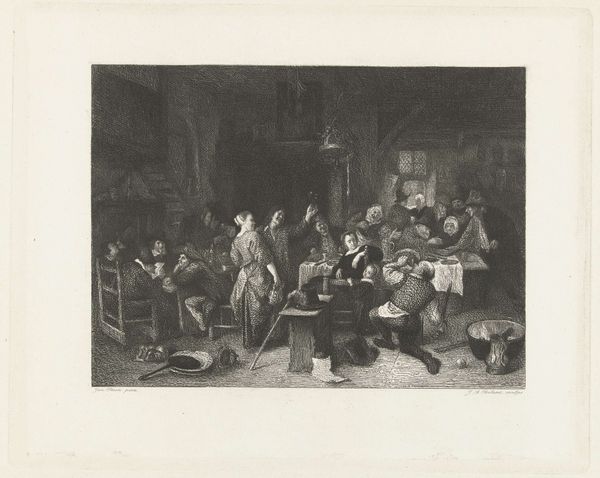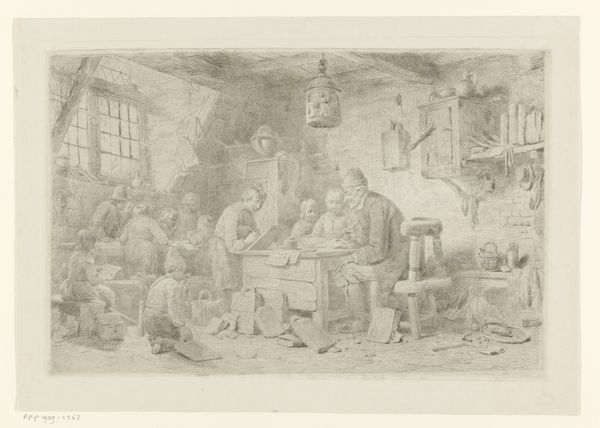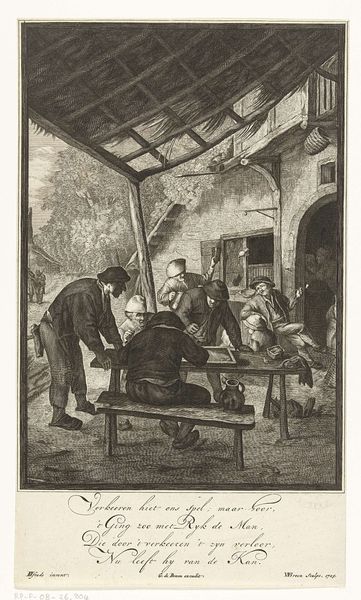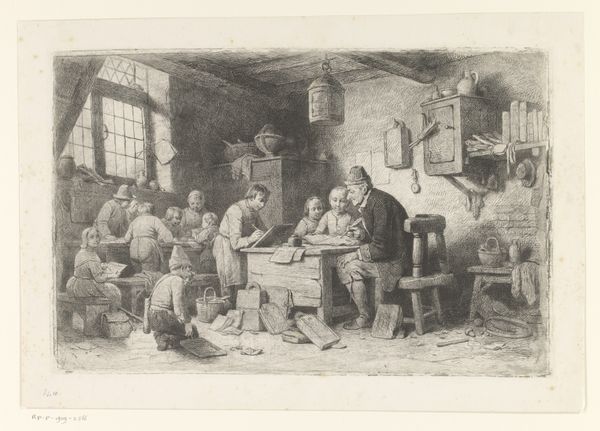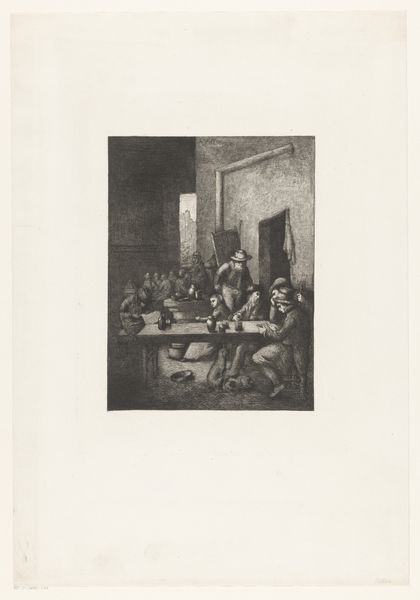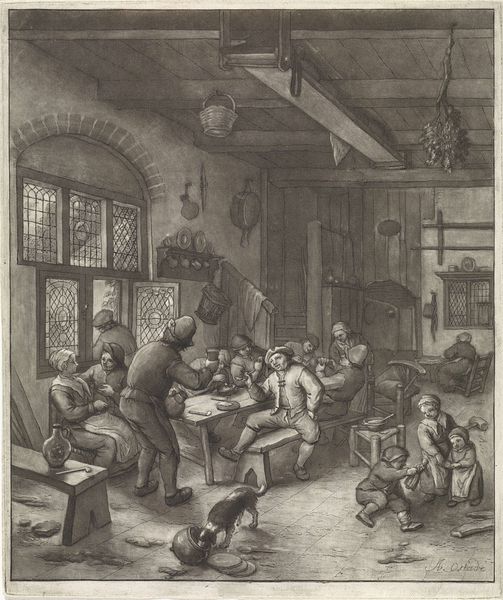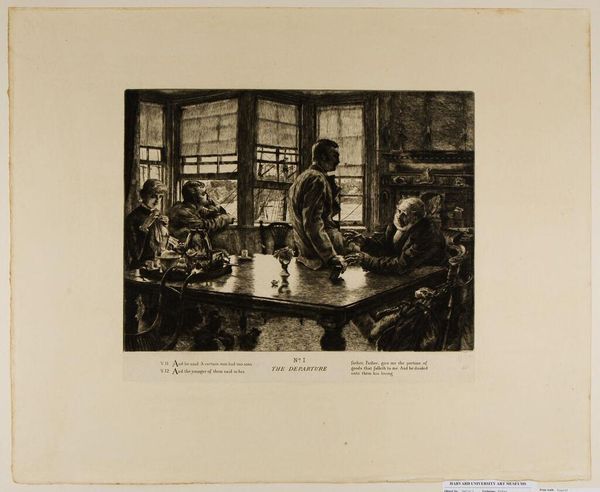
drawing, pencil, charcoal
#
pencil drawn
#
drawing
#
pencil sketch
#
dog
#
charcoal drawing
#
pencil drawing
#
pencil
#
19th century
#
genre-painting
#
charcoal
#
realism
Dimensions: height 330 mm, width 250 mm
Copyright: Rijks Museum: Open Domain
Curator: What a scene! There's a somber quality to this drawing; almost melancholic. The light barely touches everyone in the room. Editor: You're absolutely right; it's like a glimpse into another time. This is "Boerenherberg," dating from 1888 to 1891, a work created by Willem (II) Steelink. He used primarily pencil and charcoal, creating this intimate interior scene. Curator: Intimate, but detached, somehow. I love the texture he achieves with what seems like simple materials, there are layers and it makes one really feel the place, can smell the stale beer and see the dog eagerly wandering, hopeful for a crumb. Does it evoke a particular commentary on the space or society at that time? Editor: Precisely. Steelink, while often focusing on landscapes and animals, occasionally depicted genre scenes like this. The late 19th century in the Netherlands was marked by significant social change, with rural populations often facing economic hardship. This tavern, therefore, can be viewed as a social hub but also, perhaps, a place of refuge and escape, however temporary. It illustrates an environment not only in terms of aesthetics but also socio-economic dimensions of life of ordinary people. Curator: So the warmth of companionship against a backdrop of quiet desperation…I see that tension playing out on the characters’ faces. Editor: And the lighting—or lack thereof—really underscores that sense of tension. It’s carefully considered to direct our focus but also to obscure, to keep some secrets within that dimly lit space. Note that its title translated is, quite plainly, "Farmers Inn". Curator: I find the little dog adorable and sad! All this discussion made me even more aware of the image in its totality; it makes you look and observe the historical moment. Editor: I agree. Steelink managed to capture a fleeting moment in time, giving us a poignant view into the lives of these people and places which don’t survive to this day except, fortunately, on this drawing.
Comments
No comments
Be the first to comment and join the conversation on the ultimate creative platform.
